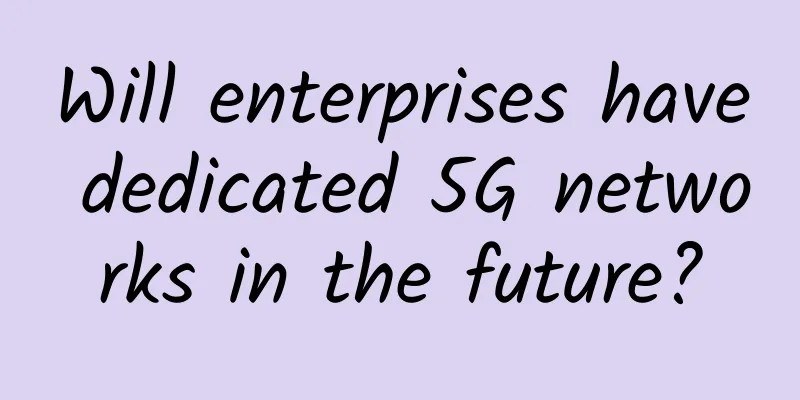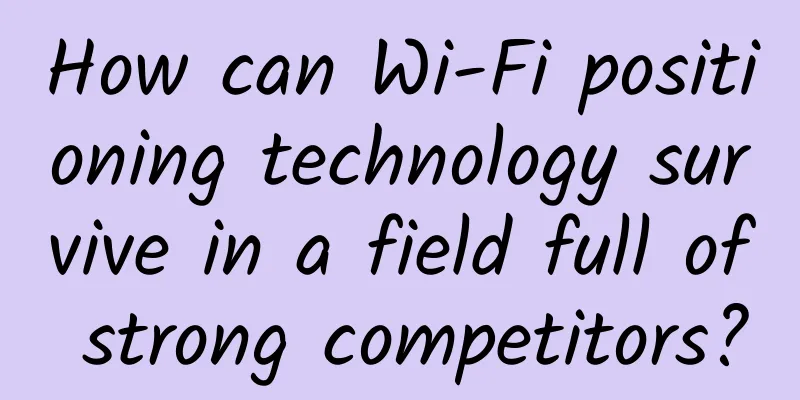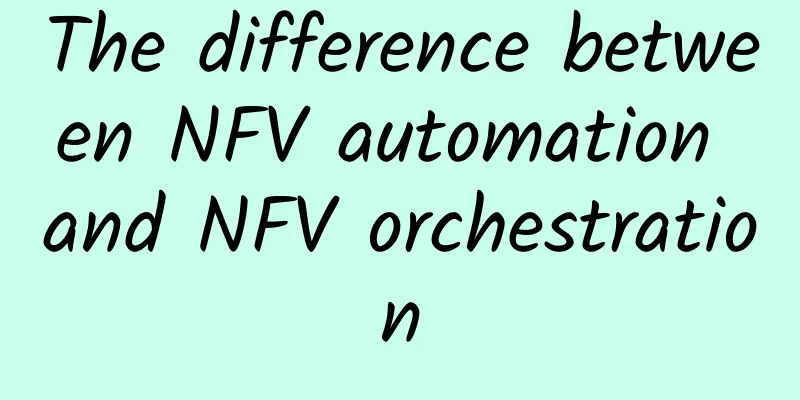Will enterprises have dedicated 5G networks in the future?

|
5G networks bring many benefits to smartphone users: faster download speeds, greater capacity in congested areas, fewer connection interruptions, shorter waiting times for games and interactive applications, the ability to perform augmented reality (AR)/virtual reality (VR), etc. Mobile workers will benefit greatly from the use of 5G, but it is not yet clear whether enterprises can fully utilize 5G's capabilities to enhance the connectivity of their employees in office facilities or campus environments.
Standard products provided by network operators may not meet the needs, especially for mission-critical closed, remote or highly regulated environments, such as production workshops, warehouses, chemical plants, medical facilities, docks, etc. Many of these facilities may not be able to obtain sufficient coverage for commercial 5G to meet their needs, such as large industrial buildings. Even if they can be covered, they may not be able to obtain the higher level of network services required by enterprises. A viable alternative to 5G However, 5G in the enterprise will soon become a viable alternative. 5G NR-U is one of the newer versions coming to market with the new capability of unlicensed radio, which means that all the features of 5G can be provided to unlicensed users in a localized commercial environment, similar to the ability of network operators to provide consumer services. Network operators must operate their 5G networks on licensed frequencies, for which they must pay substantial fees to the relevant regulators. They must also deploy many radio towers and base stations to provide comprehensive coverage for all users who roam widely. The investment required for these communications equipment is high and in large quantities. This requires network operators with a large number of users to generate revenue. But NR-U makes 5G private networks possible because there are no upfront license costs, so this business model does not require a large number of users. Instead, the return on such services lies in how to make the enterprise's operations more efficient or provide improved mission-critical functions. Just like WiFi 6, 5G NR-U currently uses unlicensed spectrum at 5GHz or 6 GHz, with the potential for the 60GHz band to be added in the future. Its spectrum can be easily shared between WiFi and 5G unlicensed networks, as more than 1200MHz of bandwidth can be used in the 6GHz band. The radio equipment required for 5G NR-U is much smaller than commercial 5G equipment, as its power is limited by unlicensed use regulations. Due to its lower operating power, the access point radio equipment is smaller in size, so it is similar to WiFi in terms of coverage, power requirements, and space requirements, and ultimately the cost of configuring network equipment will be similar. Dedicated 5G Networks vs. WiFi 5G capabilities offer many features that WiFi cannot provide. Since it will run a 5G network core similar to the one that communication operators run in their commercial environments, it provides a variety of management and security features that are not available on WiFi. Connected devices must be approved to work on the network, just like people's smartphones come with SIM cards. Network bandwidth and services can be uniquely deployed based on device, user or location. This “network slicing” provides the network connectivity options that enterprises need for the Internet of Things (IoT) and other applications. 5G offers extremely low latency options, which is critical for real-time needs, such as safety equipment on machine tools or health monitoring equipment. It also has directional antennas and the ability to form signal beams (a capability partially shared with new-generation WiFi), which provides better coverage. 5G also has an excellent security model, making it difficult to hack, thus preventing mission-critical equipment from being attacked or damaged. Future improvements will include precise positioning services, which is particularly important for autonomous vehicles and warehousing/transportation applications or asset tracking solutions. Finally, the industrial-grade reliability and latency potential built into the 5G specification (URLLC – Ultra-Reliable Low Latency Communications) makes it even more attractive for mission-critical and time-sensitive uses such as power plants, process equipment, chemical plants, machine safety monitoring, etc. Disadvantages of 5G The downside of 5G is that it does require a fairly significant core network management infrastructure to function. However, today's commercial deployments have virtualized many core network functions, and this functionality can easily be used to configure and manage private networks as well. 5G NR-U core functions will typically be deployed as a cloud-based service, except for enterprises that require comprehensive firewall control over all network aspects. Indeed, expect most private 5G networks to be managed as a service by commercial operators who already have the expertise and see it as an additional revenue-generating opportunity. 5G NR-U devices are expected to be available later this year, with more devices available in the first half of 2021. Similar to enterprise WiFi, the major vendors of WiFi (especially 5G infrastructure) will create network equipment that should be small and easy to deploy, similar to the enterprise WiFi access points available today. It is expected that most of the same suppliers that currently produce WiFi chips or 5G chips (e.g., Qualcomm, Broadcom, MediaTek) will start producing 5G NR-U chips for access equipment OEMS, such as Cisco Meraki, HP Aruba, Netgear, Samsung, and other WiFi equipment manufacturers, as well as small access points produced by traditional 5G commercial equipment manufacturers such as Ericsson, Nokia, Samsung, Huawei, etc. in conclusion In the next 1-2 years, many enterprises will be able to take advantage of the inherent capabilities of 5G NR-U. Some enterprises will decide to deploy and manage their own systems, but some will outsource their deployments, and the most likely suppliers of this "5G as a service" model will be commercial operators (such as AT&T, Verizon, T-Mobile, Vodafone, DT, etc.). Many businesses are still using older, outdated WiFi networks and are looking to upgrade to the latest technology (WiFi 6) in the next 1-2 years. However, each company’s considerations for 5G NR-U in its specific situation should be evaluated when determining the best approach. It is expected that WiFi (especially WiFi 6) will coexist with 5G NR-U, and neither is a superior solution in all situations. Many enterprises are expected to deploy both technologies. However, 5G NR-U does offer some unique capabilities that should be evaluated if an enterprise's operations could benefit from the above capabilities. |
<<: After the confession failed, I understood the principle of TCP implementation
Recommend
Huawei Cloud DevRun Summit: Login 2020 will be held tomorrow, and these friends are here
Xi'erqi subway station is so cool these days!...
Why can't the 5G package be changed back to 4G?
Recently, the "5G-forced" incident has ...
11-year-old naked runner graduated from college by himself. Online education is a great help
Recently, He Yide, the "naked running boy&qu...
Starlink banned from service in India until it gets internet license
SpaceX hasn't always received a warm welcome ...
Common WiFi Attacks and Detection
Common WiFi attacks under the 802.11 standard Tra...
Application performance improved by 70%, exploring the implementation principle and implementation path of mPaaS full-link stress testing
Business Background As the mobile development ind...
A brief analysis of RoCE network technology
In the era of data being king, people have more s...
Lenovo Huang Ying: 6G will be a "super channel" connecting the virtual and real worlds under full intelligent applications
On June 28, the MWC Shanghai World Mobile Communi...
How to play the NB-IoT game in 2019?
NB-IoT technology is a low-power wide area networ...
Intel and XSKY Debut at 2019 China Data and Storage Summit
On December 3-4, the 2019 China Data and Storage ...
City managers can now predict the future using 5G and digital twins
Digital twins, or DTs, are data-enabled city mode...
IPv6 has a "red" start, and Internet giants are showing their talents!
After "getting up early and arriving late&qu...
TmhHost Summer Promotion: 20% off BGP cloud servers in Hong Kong/Los Angeles/Zhenjiang, CN2 GIA line + high defense
As the temperature gradually rises, this year'...
6G in 2030: The panacea for enterprises is here again
While 5G is still positioned as a “near-term” gam...
When you "ping", do you know the logic behind it?
[[262430]] When we encounter a network outage, we...









